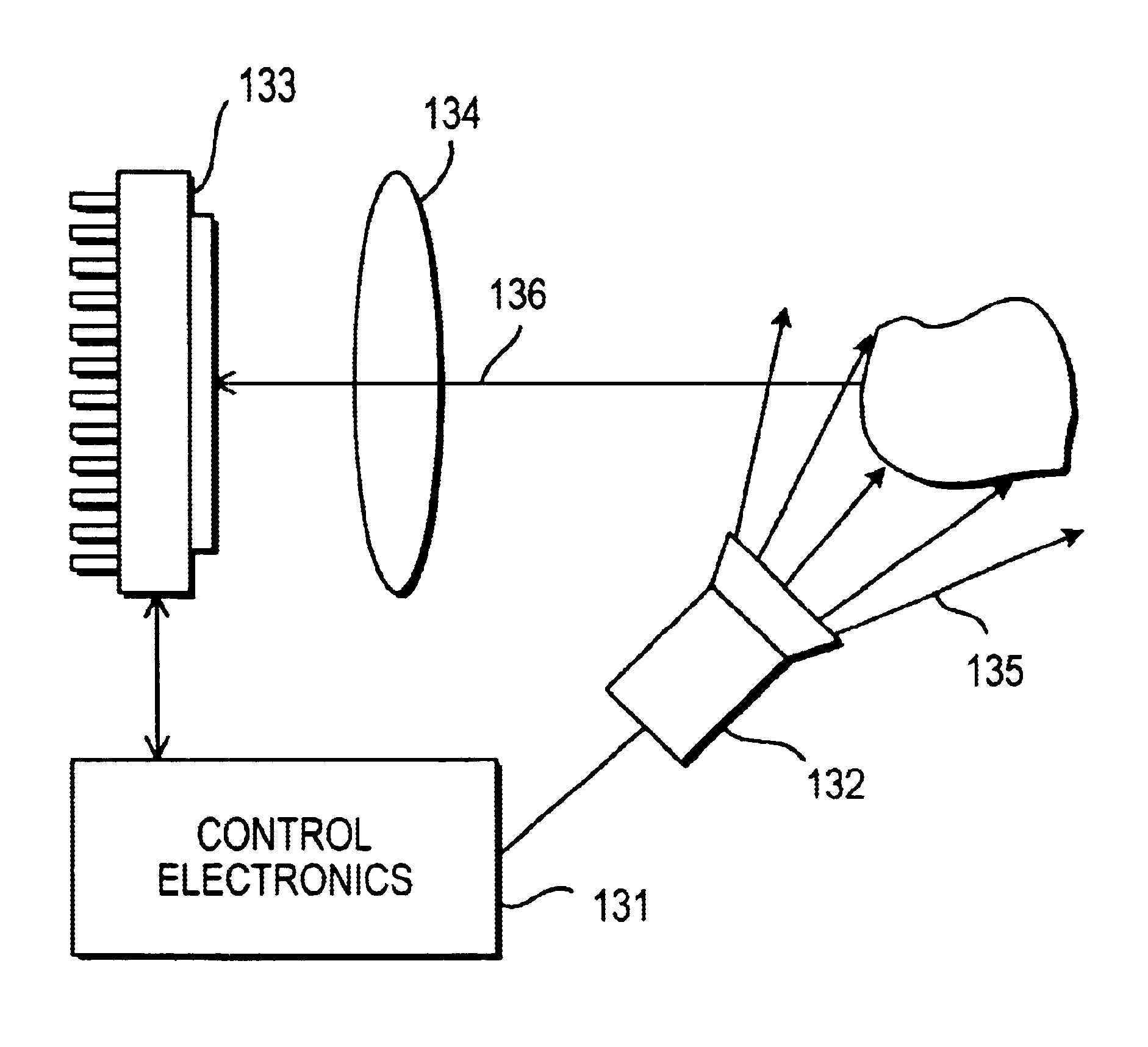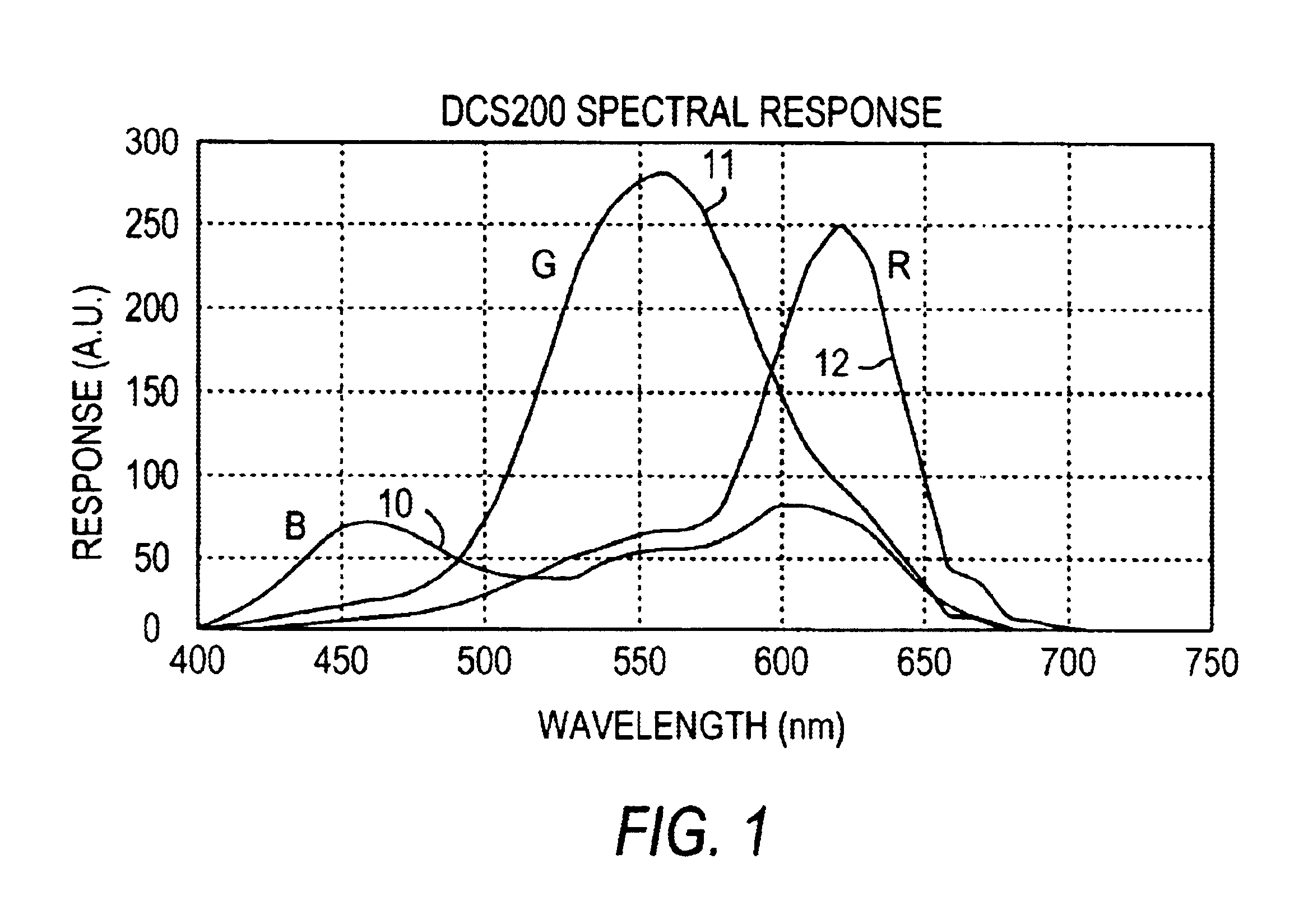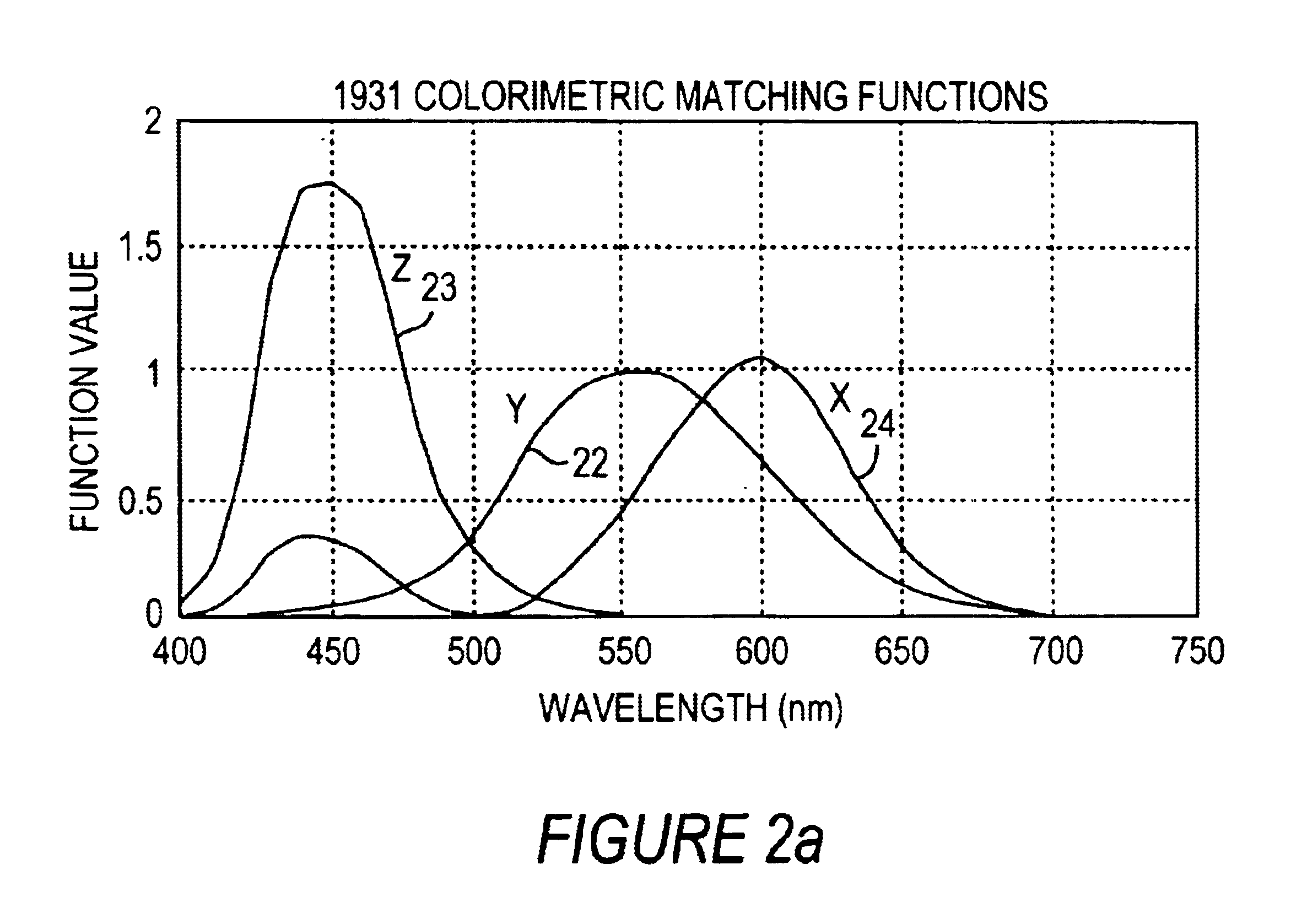Colorimetric imaging system
a colorimetric imaging and color image technology, applied in the field of electronic color image acquisition, can solve the problems of no camera or scanner, no way to retrieve the actual color from the digital image, and no universal definition of the three primaries
- Summary
- Abstract
- Description
- Claims
- Application Information
AI Technical Summary
Benefits of technology
Problems solved by technology
Method used
Image
Examples
Embodiment Construction
The embodiments shown make use of a detector with a certain spectral response, and an illumination system or a filtration system which accommodates this spectral response and further imposes either the X, the Y, or the Z colorimetric weighting function. That is, the filter or illumination system has a spectral response given by:
F.sub.x (.lambda.)=k.sub.x X(.lambda.) / D(.lambda.) [1a]
F.sub.y (.lambda.)=k.sub.y Y(.lambda.) / D(.lambda.) [1b]
F.sub.z (.lambda.)=k.sub.z Z(.lambda.) / D(.lambda.) [1c]
Where:
K.sub.i are scalar constants
F.sub.i (.lambda.) is the relative spectral content of the filter or spectral illuminator at wavelength .lambda.
D(.lambda.) is the spectral responsivity of the detector
In this way, the system takes three exposures which comprise the X, Y, and Z content of the scene presented to the camera, with overall signal levels multiplied by arbitrary scale factors. It is necessary to calibrate the scale factors k.sub.i, and to take into account the relative exposure time use...
PUM
 Login to View More
Login to View More Abstract
Description
Claims
Application Information
 Login to View More
Login to View More - R&D
- Intellectual Property
- Life Sciences
- Materials
- Tech Scout
- Unparalleled Data Quality
- Higher Quality Content
- 60% Fewer Hallucinations
Browse by: Latest US Patents, China's latest patents, Technical Efficacy Thesaurus, Application Domain, Technology Topic, Popular Technical Reports.
© 2025 PatSnap. All rights reserved.Legal|Privacy policy|Modern Slavery Act Transparency Statement|Sitemap|About US| Contact US: help@patsnap.com



